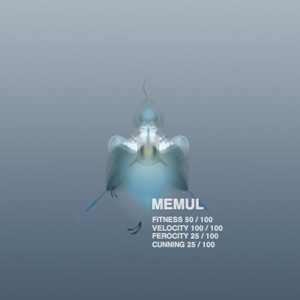Zebrafish Enables Cell Regeneration Studies To Help Understand, Treat Human Disease
ScienceDaily (Mar. 19, 2008) — One aquarium fish’s uncanny ability to regenerate essentially any cell type has given scientists a way to mimic cell loss that occurs in diseases such as Parkinson’s and diabetes then watch how the fish make more of them.
“What we are pinning everything on is the idea that humans also have this capacity, but it’s sort of locked up,” says Dr. Jeff S. Mumm, biologist at the Medical College of Georgia.
Dr. Mumm, along with his partner in science and life, Dr. Meera Saxena, founded the company, Luminomics, Inc., to help fellow scientists unlock that capacity. “The forefront of medicine is not what humans are limited to, but what biology can do,” says Dr. Mumm. “This little fish is telling us what biology is capable of. With the same general set of genetic tools, these animals can do something we can’t: regenerate lost cells and tissues. Our job is to figure out which tools in which combination or sequence afford fish this capacity, then apply this knowledge toward the creation of regenerative therapies for humans.”
While working as a postdoctoral fellow at Washington University in St. Louis, Dr. Mumm used the resilient zebrafish to study retinal development. As a student at the University of Iowa, he studied the regeneration of olfactory receptor neurons, which enable the sense of smell. They are one of the few neuronal populations that regenerate throughout life in mammals: the usual human response to lost neurons is scarring and disease.
“If you have a cell type in your body that you lose, a lot of times, the end result is a particular degenerative disease state,” Dr. Mumm says. “So if you lose dopaminergic neurons in your brain, you end up with Parkinson’s. If you lose the insulin-producing cells of your pancreas, you begin to develop diabetes. There are literally hundreds of degenerative diseases. Still very little is known about how individual cell types are regenerated.” Scientists have tried to figure out how to re-grow whole organs or appendages. “What we wanted to go after was a much more clinically relevant disease model where we target a particular cell type that we know has ramifications for our health.”
Using targeted cancer therapy as a model, he developed a way to light up cells of interest, such as the insulin-producing cells of the pancreas; destroy them; then see what it takes for the lights to come back on. The same fluorescent protein that illuminates the cells links them to an enzyme, nitroreductase, which can kill them when a particular prodrug also is introduced.
This targeted destruction is called an inducible cellular ablation system, and Luminomics uses it to produce zebrafish models of degenerative disease that scientists can study. “If you know the cell type involved in a disease, we can use this system to model it. If we want to go after a particular muscular dystrophy, we express it in muscle. If we want to go after Parkinson’s, we express it in the dopaminergic neuron population.”
Scientists can watch cells die, see how their death affects the organ system, then remove the prodrug and study how cells repopulate.
Because the zebrafish’s genome is mapped and easily altered, scientists can also produce mutant fish that, like humans, no longer – at least spontaneously – regenerate this cell type. Information gained from watching the lights come back on in the inducible model provides clues on where to focus efforts to rekindle regeneration in the mutants.
“What the system we have developed does is provide us inroads to understanding the genetics and chemicals that can modify the genetics,” Dr. Mumm says. “There may be drugs out there that can help us find what we can do, not what we normally do.”
Most cells that are mature or differentiated into a specific type, such as a neuron or kidney cell, have, at least in the past, been considered unable to produce more cells like themselves. That ability was believed largely limited to stem cells. “The closer we look, cells with that kind of potential exist in more places than we ever thought. Even some differentiated cells appear to have the capacity to reproduce themselves and give rise to something new, one of the basic definitions of stem cells,” says Dr. Mumm.
Humans have much in common with zebrafish and most animals. “For the most part, we are all a piano with the same 88 keys. The PAX6 gene, for example, makes an eye in a fish, makes an eye in a drosophila, or fruit fly, and makes an eye in us. But the way those genes are combined in time and space creates many different tunes, and that is how many different body plans come out the other end,” says Dr. Mumm.
The tune of the nimble zebrafish body allows indeterminate growth capacity: put a full-grown zebrafish in a bigger tank with more food and it gets bigger. “The fish appear to have resident stem cells for every single tissue component of their bodies that they are able to regulate,” says Dr. Mumm.
Harvard researchers reported amazing evidence of their regenerating ability in 2002 in the journal Science when they showed that within two months of removing 20 percent of a zebrafish’s heart, it had grown back. A zebrafish with a specific genetic mutation grew scar tissue, a response more typical of what humans would do, assuming they survived.
Dr. Mumm has served as president and research director of Luminomics, Inc., since it was founded in 2004. Now that he and Dr. Saxena have relocated to Augusta, he’ll refocus on making new findings in cellular regeneration while Dr. Saxena directs the company. “I’ll probably be one of the biggest customers for the company,” he says.
“It actually plays well to our strengths,” Dr. Saxena says. She thrives on managing details while her husband prefers chasing new information. MCG’s incubator also seems a good fit. The two looked at many opportunities where he could continue basic science while she directed the company. One of Augusta’s many strengths was making the core laboratory facilities available to MCG scientists and incubator occupants alike. “As simple as an idea as it is and as obvious, it is rare,” says Dr. Mumm.
http://www.sciencedaily.com/releases/2008/03/080317155040.htm

zebrafish embryos

you MUST add these lil' guys to your aquarium!
wikipedia says: "Zebrafish are hardy fish and considered good for beginner aquarists [NICE!]. Their ease of keeping and breeding, beauty[oh la la], price and broad availability may all contribute to their popularity [as well as their totipotency!]. They thrive best at temperatures above 22 degrees Celsius and below 27 degrees Celsius. They feed on worms and small crustaceans and on insect larvae[gross!]. They also thrive as shoals of 6 or more, although they do interact well with other fish types in the Aquarium[the other fish are jealous because these guys can recreate their own organs and shit].


























